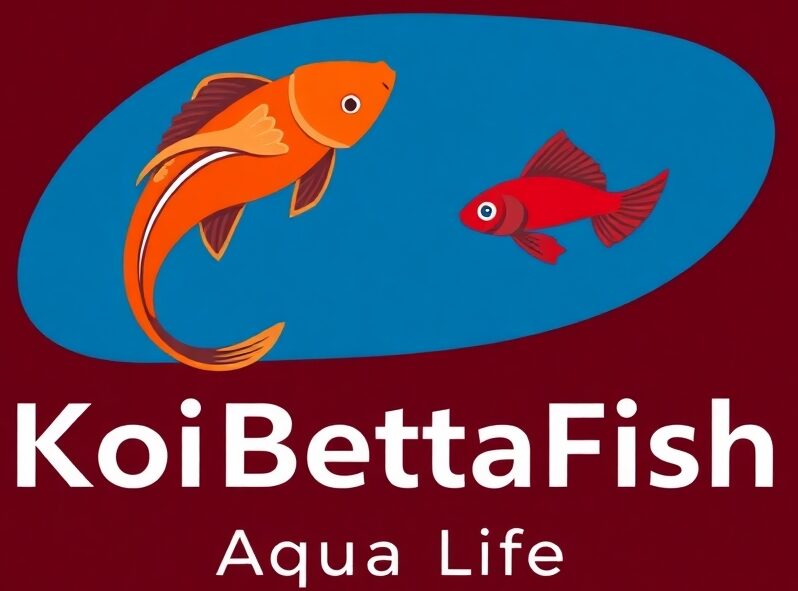Understanding Black Beard Algae: The Stubborn Invader
Black Beard Algae (BBA), scientifically known as Audouinella, is a type of red algae that appears as dark tufts resembling a beard or brush. Despite its name, it can appear black, dark green, or even bluish in color. This stubborn algae typically attaches to rough surfaces like plant edges, driftwood, decorations, and even filter equipment.
What makes BBA particularly problematic is its tenacity. It has strong attachment points and a protective outer layer that makes it resistant to many treatments. Unlike other algae that fish readily consume, BBA requires specialized algae eaters with the right mouth structure and appetite to tackle it effectively.
Why BBA is problematic:
- Competes with plants for nutrients and can suffocate them
- Difficult to remove manually without damaging plants
- Resistant to many standard algae treatments
- Can spread quickly throughout the aquarium
- Detracts from the visual appeal of your aquatic landscape
BBA thrives in environments with fluctuating CO2 levels, excess nutrients (particularly phosphates), and inconsistent maintenance routines. Understanding these factors is crucial for both selecting the right algae eaters and creating an environment where BBA struggles to establish itself.
Top 10 Black Beard Algae Eaters for Your Aquarium
Let’s explore the most effective creatures that can help control black beard algae in your aquarium. Each has been rated based on their BBA-eating effectiveness, compatibility with community tanks, and overall maintenance requirements.
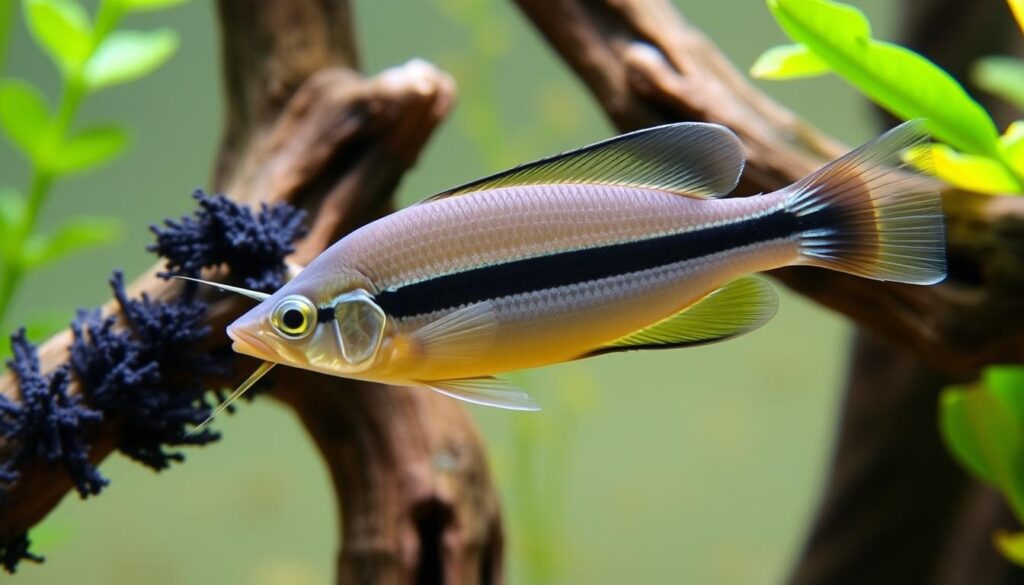
1. Siamese Algae Eater (Crossocheilus oblongus)
The Siamese Algae Eater (SAE) is widely regarded as the champion of black beard algae control. Unlike many fish that lose interest in algae as they mature, SAEs maintain their appetite for BBA throughout their lives, making them a long-term solution.
Care Requirements
- Tank Size: 30+ gallons
- Temperature: 75-79°F (24-26°C)
- pH: 6.5-7.0
- Temperament: Peaceful but active
- Size: Up to 6 inches
Pros
- Extremely effective at eating BBA
- Peaceful with most community fish
- Maintains interest in algae throughout life
- Active and interesting to watch
Cons
- Can be confused with similar-looking species
- Needs larger tank as it grows
- Can become territorial with its own kind
- May occasionally uproot delicate plants
“The true Siamese Algae Eater is the most reliable fish for black beard algae control I’ve found in 15 years of keeping planted tanks. Just make sure you’re getting the real thing!”
2. Amano Shrimp (Caridina multidentata)
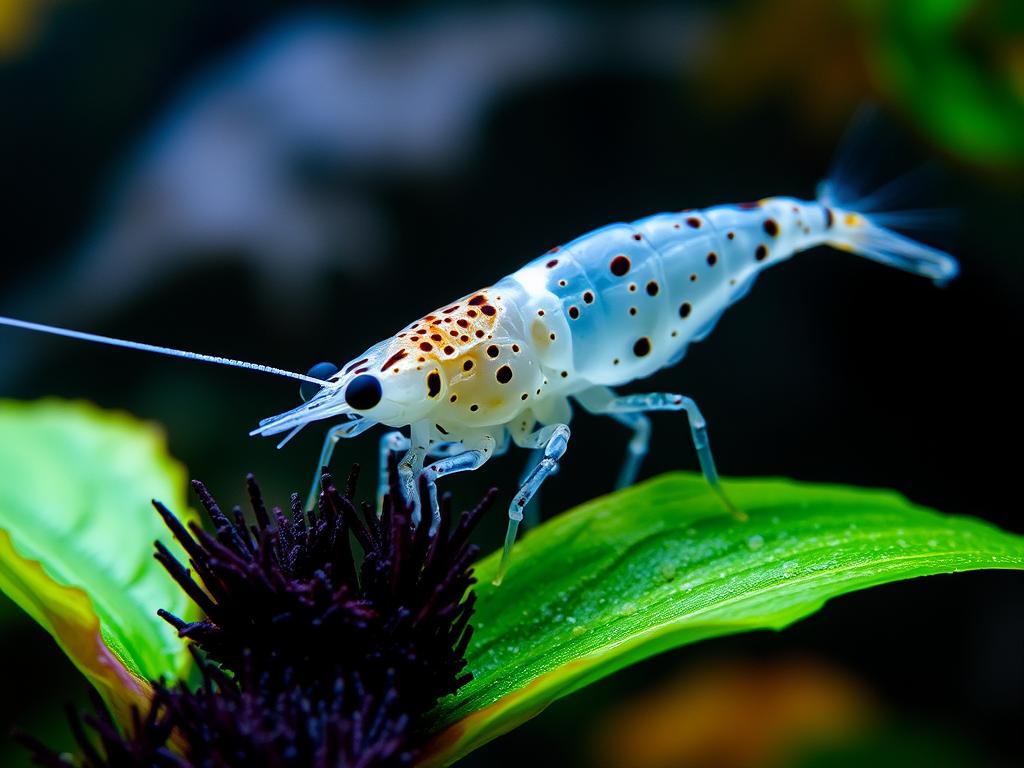
Amano shrimp are excellent algae controllers that work best in groups. These industrious invertebrates will tackle black beard algae, especially when the algae is weakened through CO2 supplementation or spot treatments. Their small size allows them to reach areas that larger fish cannot.
Care Requirements
- Tank Size: 10+ gallons
- Temperature: 70-80°F (21-27°C)
- pH: 6.0-7.5
- Temperament: Peaceful
- Size: 1.5-2 inches
Pros
- Excellent at cleaning hard-to-reach areas
- Compatible with most community fish
- Low bioload on the aquarium
- Won’t damage plants while cleaning
Cons
- May become prey for larger fish
- Works best on weakened BBA
- Needs a group to be most effective
- Cannot breed in freshwater
3. Florida Flagfish (Jordanella floridae)
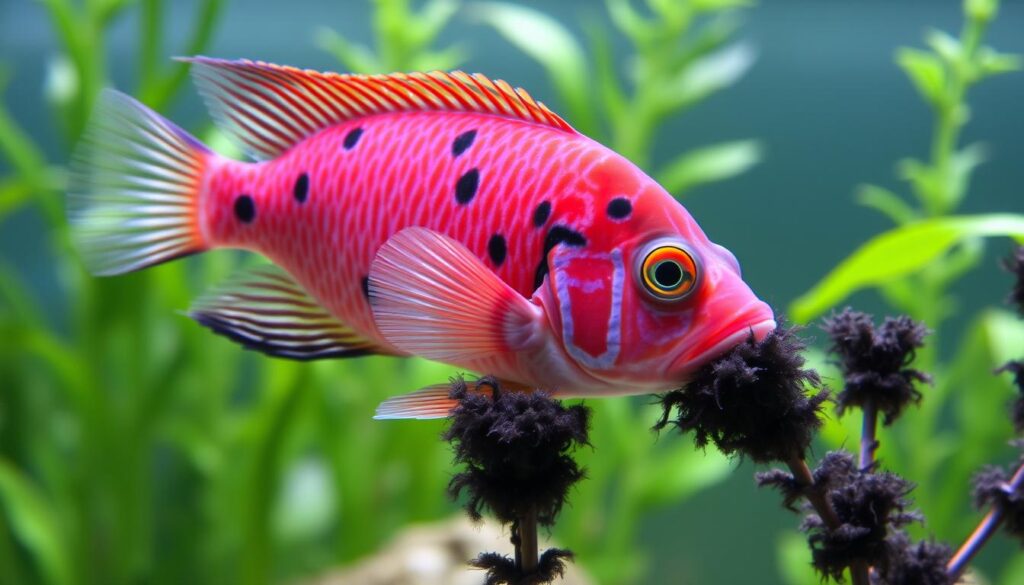
The Florida Flagfish is a North American native with a voracious appetite for various algae types, including black beard algae. These colorful fish are particularly effective in smaller tanks where their sometimes territorial nature is less problematic.
Care Requirements
- Tank Size: 15+ gallons
- Temperature: 64-75°F (18-24°C)
- pH: 7.0-8.2
- Temperament: Semi-aggressive
- Size: 2-2.5 inches
Pros
- Highly effective at consuming BBA
- Attractive, colorful appearance
- Suitable for cooler water tanks
- Hardy and disease-resistant
Cons
- Can be territorial, especially males
- May nip at slow-moving fish
- Not ideal for tropical community tanks
- Can damage delicate plants
4. Nerite Snails (Neritina spp.)
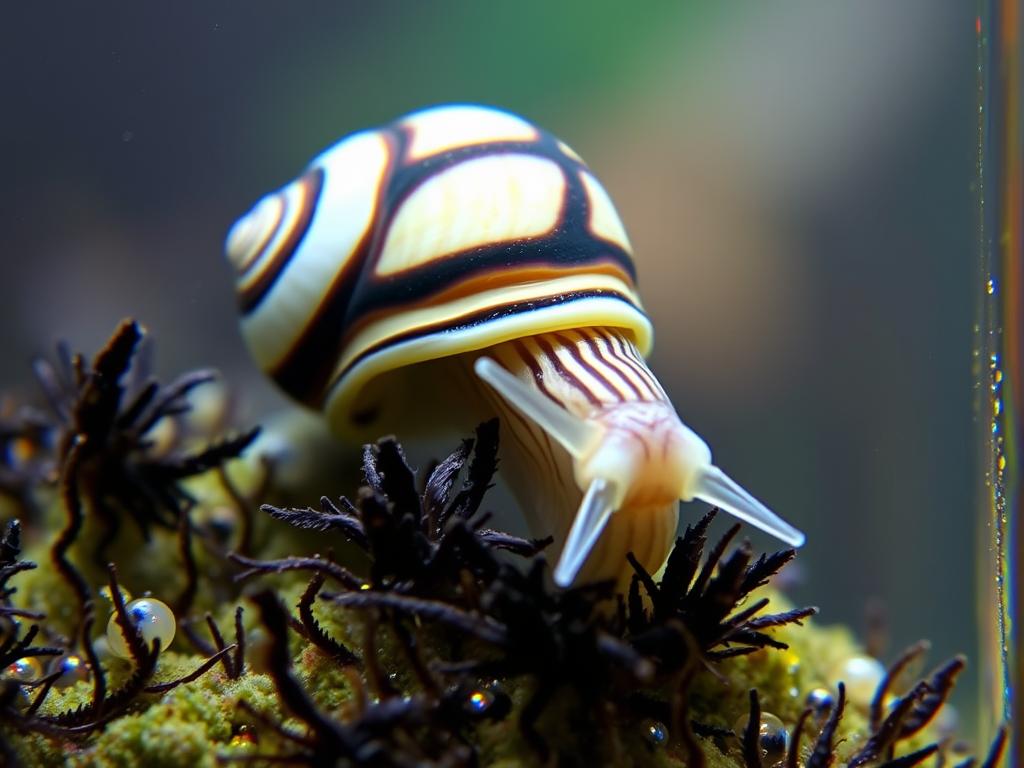
Nerite snails are peaceful algae eaters that excel at cleaning hard surfaces like glass, rocks, and driftwood. While not as effective against established BBA as some fish, they work well as part of a comprehensive approach, especially for algae on hardscape.
Care Requirements
- Tank Size: 5+ gallons
- Temperature: 72-78°F (22-26°C)
- pH: 7.0-8.5
- Temperament: Peaceful
- Size: 0.5-1 inch
Pros
- Safe with all plants and fish
- Cannot reproduce in freshwater
- Excellent for cleaning hard surfaces
- Available in attractive patterns
Cons
- Less effective on established BBA
- Slower moving than fish
- May lay eggs (won’t hatch but are unsightly)
- Sensitive to copper medications
5. Black Molly (Poecilia sphenops)
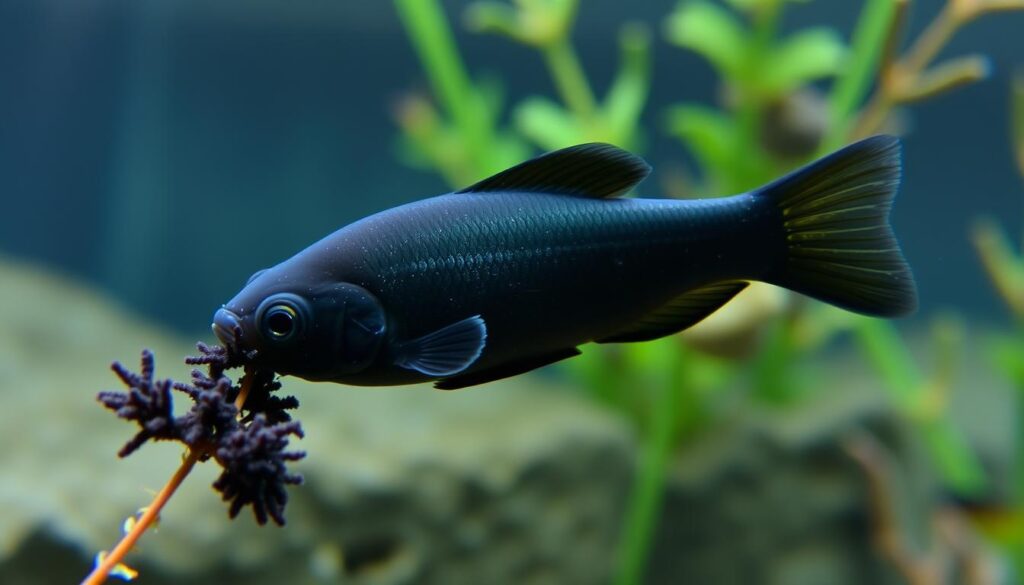
Black Mollies are often overlooked as algae eaters, but they have a natural inclination to graze on various algae types, including softer BBA. Their omnivorous diet and peaceful nature make them excellent additions to community tanks with algae issues.
Care Requirements
- Tank Size: 20+ gallons
- Temperature: 75-82°F (24-28°C)
- pH: 7.5-8.5
- Temperament: Peaceful
- Size: 3-4 inches
Pros
- Readily available and affordable
- Peaceful community fish
- Adaptable to various water conditions
- Attractive appearance
Cons
- Less effective than specialized algae eaters
- Breeds readily (can lead to overpopulation)
- Prefers harder, alkaline water
- Needs supplemental feeding
6. Chinese Algae Eater (Gyrinocheilus aymonieri)
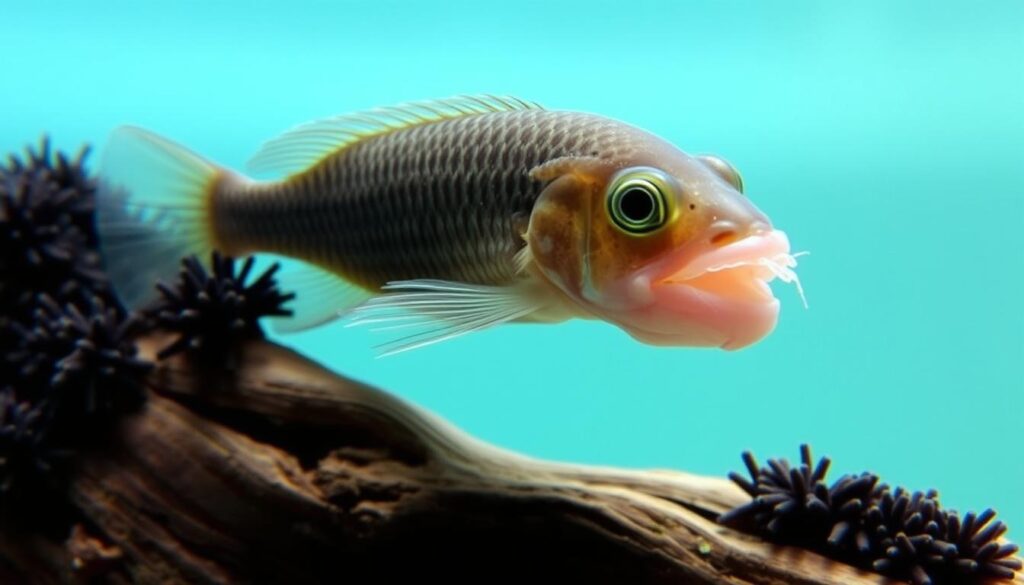
Chinese Algae Eaters are effective at consuming BBA when young, but their appetite for algae often diminishes as they mature. They’re best suited for larger tanks where their sometimes aggressive behavior is less problematic.
Important Note: Chinese Algae Eaters can grow up to 10 inches and may become territorial as they age. They’re recommended only for experienced aquarists with larger tanks.
Care Requirements
- Tank Size: 50+ gallons
- Temperature: 74-80°F (23-27°C)
- pH: 6.5-7.5
- Temperament: Aggressive when mature
- Size: Up to 10 inches
Pros
- Very effective at eating BBA when young
- Can reach difficult areas with sucker mouth
- Hardy and disease-resistant
- Tolerates various water conditions
Cons
- Becomes aggressive as it matures
- May attack slow-moving or sleeping fish
- Grows too large for most community tanks
- Loses interest in algae with age
7. Bristlenose Pleco (Ancistrus spp.)
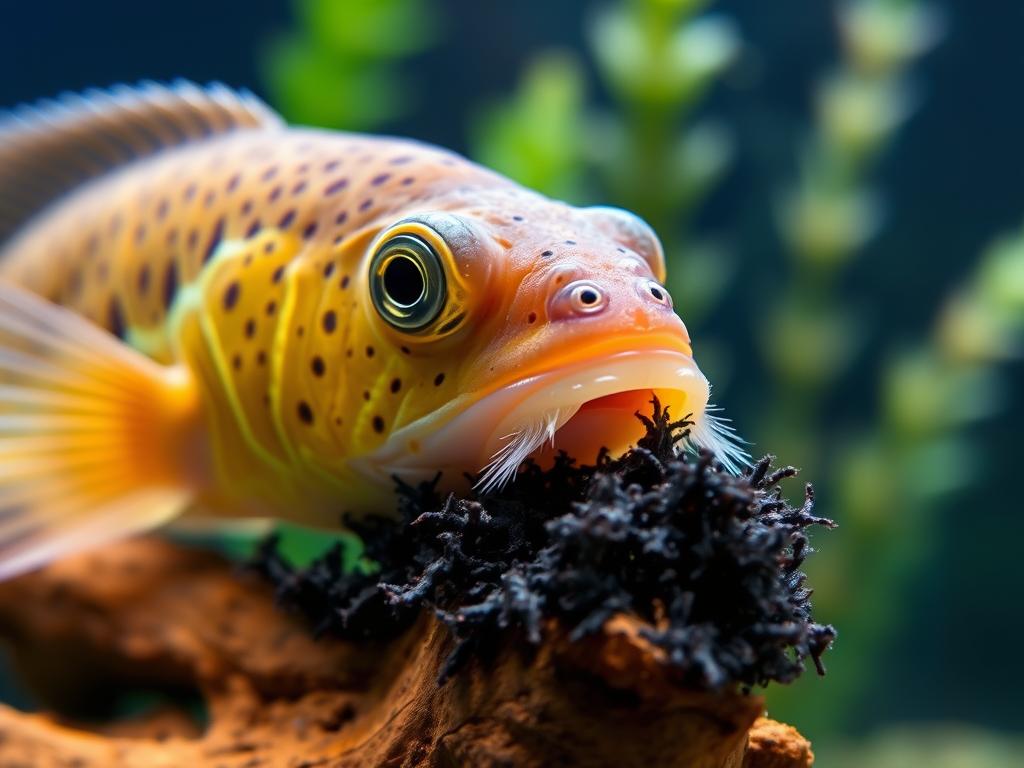
Bristlenose Plecos are popular algae eaters that stay relatively small compared to other plecos. While they prefer softer algae types, they will consume BBA when other food sources are limited, particularly on hardscape items like driftwood.
Care Requirements
- Tank Size: 20+ gallons
- Temperature: 73-80°F (23-27°C)
- pH: 6.5-7.5
- Temperament: Peaceful
- Size: 3-5 inches
Pros
- Stays smaller than common plecos
- Peaceful with most tank mates
- Effective at cleaning hard surfaces
- Can breed in home aquariums
Cons
- Prefers other algae types over BBA
- Needs supplemental feeding
- Requires driftwood in diet
- Creates significant waste
8. Rosy Barb (Pethia conchonius)
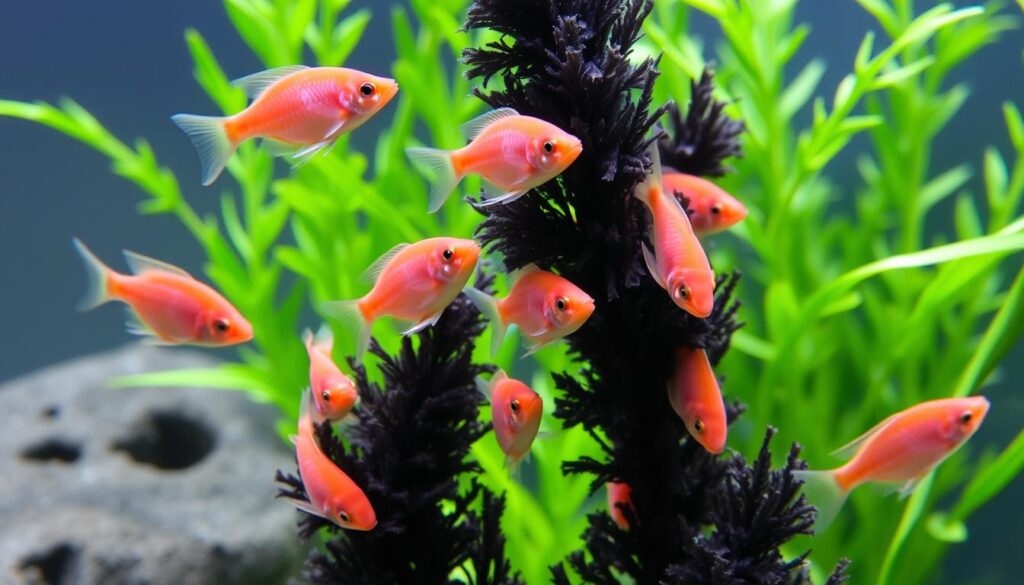
Rosy Barbs are active schooling fish that will nibble on black beard algae, particularly when kept in groups. While not specialized algae eaters, their constant grazing can help keep BBA under control, especially on plant leaves.
Care Requirements
- Tank Size: 30+ gallons
- Temperature: 64-75°F (18-24°C)
- pH: 6.5-7.5
- Temperament: Semi-aggressive
- Size: 3-4 inches
Pros
- Attractive, active schooling fish
- Hardy and disease-resistant
- Suitable for cooler water tanks
- Males display vibrant colors
Cons
- May nip at long-finned fish
- Less effective than specialized algae eaters
- Needs to be kept in groups (5+)
- Can damage delicate plants
9. Otocinclus Catfish (Otocinclus spp.)
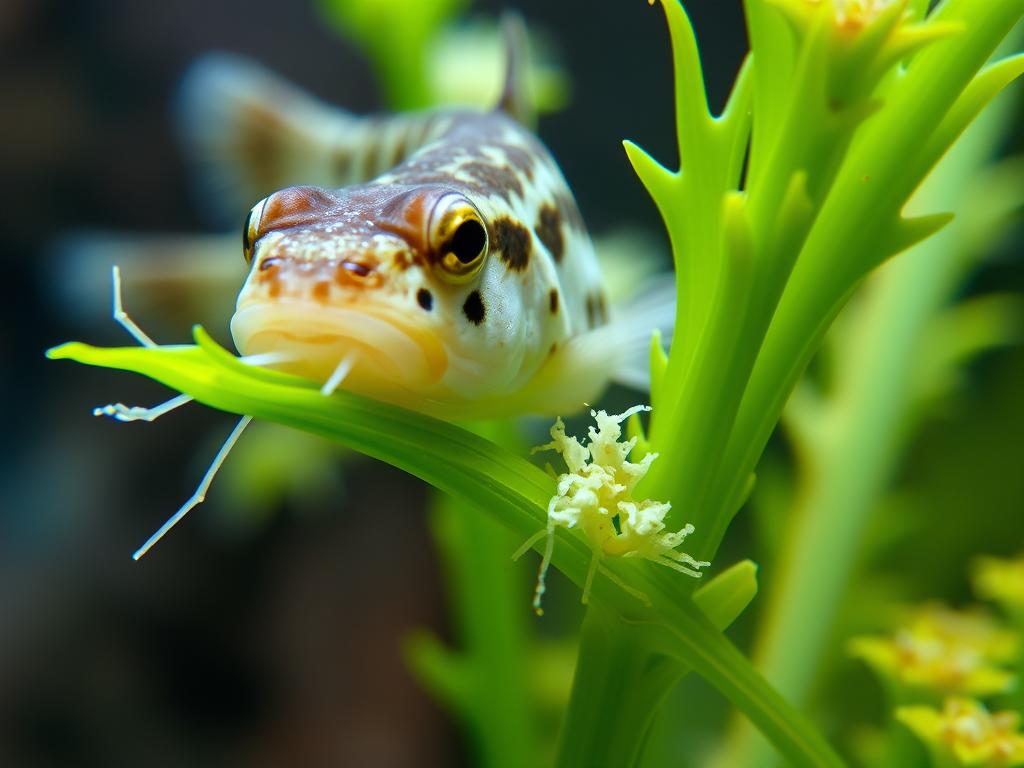
Otocinclus catfish are peaceful algae eaters that excel at consuming soft green algae. While they’re not primary BBA consumers, they can help with early-stage growth and work well as part of a comprehensive algae management strategy.
Care Requirements
- Tank Size: 10+ gallons
- Temperature: 72-79°F (22-26°C)
- pH: 6.0-7.5
- Temperament: Peaceful
- Size: 1-2 inches
Pros
- Very peaceful and safe with all tank mates
- Small size for nano tanks
- Won’t damage plants
- Excellent for soft algae control
Cons
- Limited effectiveness against established BBA
- Sensitive to poor water quality
- Needs to be kept in groups
- Can be difficult to acclimate
10. Cherry Barb (Puntius titteya)
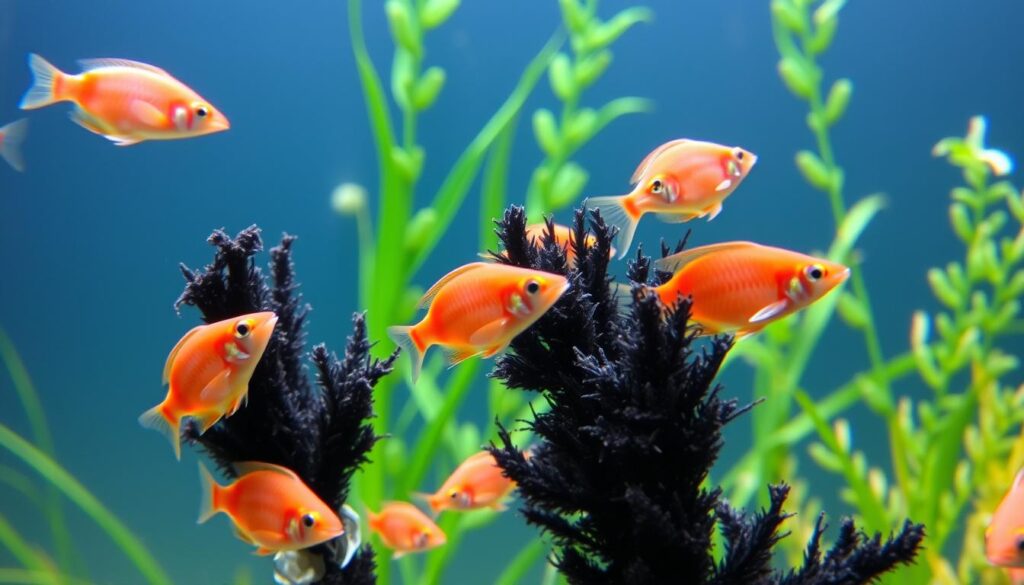
Cherry Barbs are peaceful schooling fish that will occasionally graze on black beard algae. While not dedicated algae eaters, they can help control minor BBA outbreaks while adding color and activity to your aquarium.
Care Requirements
- Tank Size: 20+ gallons
- Temperature: 73-79°F (23-26°C)
- pH: 6.0-7.0
- Temperament: Peaceful
- Size: 2 inches
Pros
- Peaceful community fish
- Attractive red coloration
- Hardy and easy to care for
- Suitable for planted tanks
Cons
- Limited effectiveness against BBA
- Needs to be kept in groups (6+)
- Requires supplemental feeding
- Males may show mild aggression
Comparison of Black Beard Algae Eaters
| Species | Effectiveness | Tank Size | Temperament | Maintenance | Best For |
| Siamese Algae Eater | ★★★★★ | 30+ gallons | Peaceful | Moderate | Severe BBA infestations |
| Amano Shrimp | ★★★★☆ | 10+ gallons | Peaceful | Low | Planted tanks, hard-to-reach areas |
| Florida Flagfish | ★★★★☆ | 15+ gallons | Semi-aggressive | Moderate | Cooler water tanks |
| Nerite Snails | ★★★☆☆ | 5+ gallons | Peaceful | Very Low | Hardscape cleaning |
| Black Molly | ★★★☆☆ | 20+ gallons | Peaceful | Low | Community tanks |
| Chinese Algae Eater | ★★★☆☆ | 50+ gallons | Aggressive | High | Large tanks, young specimens only |
| Bristlenose Pleco | ★★★☆☆ | 20+ gallons | Peaceful | Low | Hardscape cleaning |
| Rosy Barb | ★★★☆☆ | 30+ gallons | Semi-aggressive | Low | Cooler water community tanks |
| Otocinclus Catfish | ★★☆☆☆ | 10+ gallons | Peaceful | Moderate | Soft algae, supplemental BBA control |
| Cherry Barb | ★★☆☆☆ | 20+ gallons | Peaceful | Low | Community tanks, mild BBA issues |
Creating a BBA-Resistant Aquarium Environment
While algae eaters are effective for controlling black beard algae, prevention is always better than cure. Implementing these strategies will help create an environment where BBA struggles to establish itself.
Need a Complete BBA Solution?
For stubborn black beard algae problems, consider Green Water Labs Algae Control – a plant-based solution that’s safe for fish, shrimp, and plants while effectively targeting BBA.
Balancing Nutrients and CO2
- Stabilize CO2 levels – Aim for 20-30 mg/l if using CO2 injection
- Monitor phosphate levels – Keep below 1.0 ppm
- Regular water changes – 25-30% weekly to remove excess nutrients
- Proper fertilization – Use a balanced approach without excess
- Test water regularly – Monitor for imbalances before BBA appears
Black beard algae thrives when CO2 levels fluctuate or when phosphates are high. Maintaining stable parameters prevents BBA from gaining a foothold in your aquarium.
Optimizing Light and Maintenance
- Control lighting duration – Limit to 6-8 hours daily
- Adjust intensity – Reduce brightness if BBA appears
- Clean filter regularly – Prevents nutrient buildup
- Remove debris promptly – Vacuum substrate during water changes
- Trim affected plant parts – Remove heavily infested leaves
Consistent maintenance and appropriate lighting are crucial for preventing black beard algae. Using timers for lights ensures consistency that BBA doesn’t appreciate.
Combining Algae Eaters with Other Treatments
For the most effective BBA control, combine algae eaters with these complementary approaches:
Manual Removal
- Trim heavily affected plant leaves
- Remove and clean hardscape items
- Use a toothbrush to gently scrub surfaces
- Siphon removed algae immediately
Chemical Treatments
- Spot treat with hydrogen peroxide (3%)
- Use liquid carbon products like Flourish Excel
- Consider specialized algaecides for severe cases
- Always follow dosing instructions carefully
Biological Competition
- Add fast-growing plants to compete for nutrients
- Include floating plants to reduce light
- Maintain healthy plant growth through proper fertilization
- Establish a balanced ecosystem
Important: When using chemical treatments, always remove or turn off carbon filtration and monitor your aquarium inhabitants for signs of stress. Some treatments may harm sensitive species like shrimp or snails.
Frequently Asked Questions About Black Beard Algae Eaters
Do Otocinclus catfish eat black beard algae?
Otocinclus catfish are not primary consumers of black beard algae. They prefer softer green algae types and biofilm. While they may occasionally nibble on very young or weakened BBA, they shouldn’t be relied upon as a primary solution for black beard algae problems. They work best as part of a comprehensive approach that includes other algae eaters like Siamese Algae Eaters or Amano shrimp.
Can Amano shrimp eliminate BBA completely?
Amano shrimp can significantly reduce black beard algae but typically cannot eliminate it completely on their own, especially in larger tanks with established BBA. They’re most effective when:
- The BBA has been weakened through CO2 supplementation or spot treatments
- They’re kept in sufficient numbers (1-2 per gallon for heavy algae problems)
- They’re combined with other algae control methods
For best results, use Amano shrimp as part of an integrated approach that addresses the root causes of BBA growth.
How do I tell a true Siamese Algae Eater from similar-looking species?
True Siamese Algae Eaters (Crossocheilus oblongus) are often confused with Flying Foxes and Chinese Algae Eaters. Look for these distinctive features:
- A single black stripe running from head to tail, including through the tail fin
- No separate black marking on the tail fin
- A sucker-like mouth with two pairs of barbels
- A more slender body compared to similar species
Purchasing from reputable sources and checking scientific names can help ensure you’re getting a true SAE that will effectively eat black beard algae.
Will algae eaters damage my aquarium plants?
Most dedicated algae eaters like Siamese Algae Eaters and Amano shrimp will not damage healthy plants. However, some species may impact plants under certain conditions:
- Chinese Algae Eaters may damage delicate plants when larger
- Plecos might rasp on plant surfaces if underfed
- Florida Flagfish and some barbs may occasionally nibble on soft-leaved plants
To minimize plant damage, ensure algae eaters are well-fed with appropriate supplemental foods and choose species known to be plant-safe for heavily planted aquariums.
How many algae eaters do I need for my tank?
The number of algae eaters needed depends on your tank size, the severity of the BBA problem, and the species you choose:
- Siamese Algae Eaters: 1 per 20-30 gallons
- Amano Shrimp: 1-2 per gallon for heavy algae issues
- Nerite Snails: 1 per 5 gallons
- Otocinclus: Groups of 6+ for a 20-gallon tank
Remember that more isn’t always better—overstocking can create waste problems that may worsen algae issues. Start with the recommended numbers and adjust based on results.
Final Thoughts on Black Beard Algae Control
Controlling black beard algae requires a multi-faceted approach. While algae eaters are an essential biological control method, they work best when combined with proper tank maintenance, nutrient management, and occasional targeted treatments. The Siamese Algae Eater stands out as the most effective dedicated BBA consumer, but a combination of different species often provides the best results.
Remember that preventing black beard algae is always easier than eliminating an established infestation. By maintaining stable water parameters, appropriate lighting, and regular maintenance routines, you can create an environment where BBA struggles to gain a foothold. When combined with the right algae-eating inhabitants, these practices will help keep your aquarium clean, healthy, and visually appealing for years to come.
Read Also What Eats Black Beard Algae? Why Most Cleanup Crews Fail to Remove It
Ready to Tackle Your BBA Problem?
Start with the right algae eaters and support them with proper tank conditions. For stubborn cases, consider specialized treatments that target black beard algae directly.
